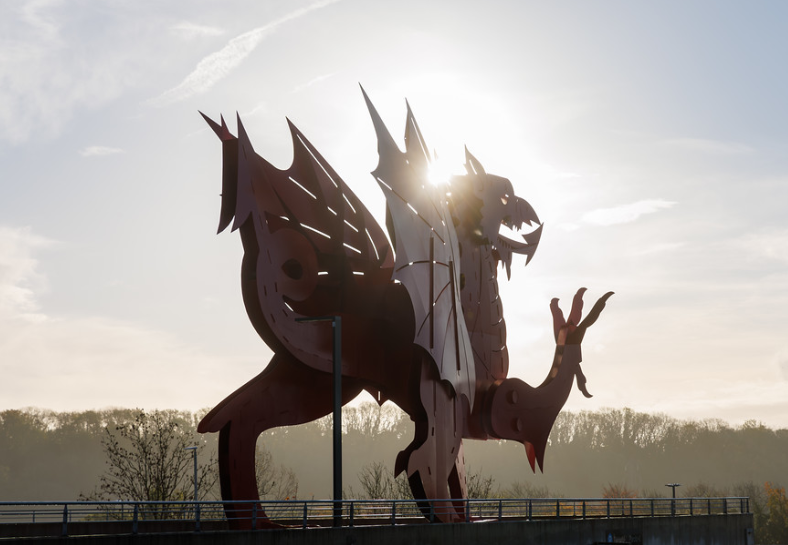Lila Vazquez Villamor, Head of Early Phase Technical Development – Offshore Wind at Equinor, Umberto Bizzaro, Market Manager - Sustainable Energy at Tensar, and Melissa Leung Pah Hang, Senior Manager at Capgemini
22/10/2025 | Welsh



Future Energy Wales 2025 – reflections from the RenewableUK Shadow Board
22 October 2025
RenewableUK Cymru’s Future Energy Wales Conference returned in 2025 with renewed ambition and a focus on clear actions to unlock Wales' renewable energy potential across all technologies, while addressing the key challenges facing Welsh stakeholders. Taking place from 7 to 8 October at Newport’s ICC Wales, this year's event was attended by several members of the RenewableUK Shadow Board, who have offered their reflections on the event:
Lila Vazquez Villamor, Head of Early Phase Technical Development – Offshore Wind, Equinor:
Attending Future Energy Wales this year was a timely reminder that bold action and ambition remain essential to Wales’ energy transition. My conference experience began with Jane Cooper’s panel on “skin in the game” - a call for renewed urgency and private investment to catalyse the long-term project pipeline. The opportunity for floating wind in the Celtic Sea is big, but realising it will mean growing the local supply chain through focused, forward-looking investment.
Public sentiment around net zero is evolving in Wales, and the answer isn’t just messaging, but delivering energy security and tangible economic benefits. Offshore wind has revitalised communities and port economies nationally, and Wales is poised for similar success. Yet community value must go beyond ownership and create lasting prosperity, skills, and pride in place. This resonates strongly with the priorities of the Shadow Board, particularly around skills development and creating pathways for new entrants. Through initiatives like the NextGen Network, we hope to support Wales in building the diverse, resilient workforce needed to deliver on our clean power targets.
Day two of the conference brought a sense of momentum, with the recent agreements for leases marking an exciting step for floating wind in the region. Port infrastructure development and supply chain innovation remain central to long-term success, while a steady pipeline of future projects is key to encouraging vital investments, and success for those ahead of us will help build confidence and shape the path forward.
RenewableUK Cymru's analysis points to a clear ambition, with 17.9GW of renewables and up to £47bn private investment by 2035 within reach. The sense of "beacons of hope" is real, and offshore wind represents an opportunity to deliver for livelihoods, innovation, and a balanced energy future.
Umberto Bizzaro, Market Manager - Sustainable Energy, Tensar:
Future Energy Wales was a key event and highlighted how the renewable energy landscape has evolved in Wales, as well as identifying the gaps that need to be filled in order to tie into a more holistic Clean Power 2030 plan where Wales benefits directly from the deployment of renewable energy. Attending for a third consecutive year, I noticed some topics evolve whilst others remained unchangingly key to unlocking a renewable future for Wales.
It is apparent that grid development is very much needed to allow many projects, especially those in mid Wales, to be developed. The public debate continues to centre on overhead lines vs underground cables, despite overhead lines being far more economically viable, quicker to build and less environmentally damaging. Planning permission remains a challenge, especially where peat is involved, and it may be beneficial to study projects throughout the UK which have been developed over similar peatland to unlock solutions that could be used for Wales. We have also seen a new emphasis from Great British Energy on allocating funds towards tier 2 and 3 suppliers, in addition to tier 1 as had previously been done, to further stimulate and develop a more localised and resilient supply chain. The aim remains to bring more jobs and opportunities to Wales for projects built in Wales, and this goes hand in hand with creating the market conditions to allow more renewable energy projects to be built, as where projects are developed the supply chain will follow.
Other key focus areas were onshore wind and, of course, offshore wind in the Celtic Sea, whilst battery energy storage systems also made an appearance as either co-located assets or standalone to provide grid flexibility. This will come into focus in 2026 when NESO introduces the Strategic Spatial Energy Plan (SSEP) and gives further clarity to developers on where they can ideally locate based on the local energy needs. Finally, hydrogen also has a role to play, although it is not as mature a technology and is thus more challenging in terms of short-term financial ROI.
Ahead of what many expect to be a political change at next year’s Senedd elections, certain elements of uncertainty are anticipated as manifestos have yet to be released. Yet regardless of the outcome, the critical ask of all political parties in Wales remains for momentum not to be squandered and for the work already carried out to advance renewables to be progressed through favourable policy.
Melissa Leung Pah Hang, Senior Manager, Capgemini:
Attending the Future Energy Wales conference for the first time was an eye-opening opportunity to engage deeply with the country’s ambitious journey towards a low-carbon energy future. The two days highlighted how the energy transition is reaching a critical phase where bold ideas must be matched with practical delivery. Several key themes stood out, ranging from the importance of community engagement, to the levels of political and social complexity on which the transition rests.
One of the most persistent themes throughout the conference - and something I found personally striking - was the delicate balance between progress and place. Welsh communities rightly love their landscapes, yet the challenge lies in developing the necessary infrastructure without eroding that cherished sense of place. For instance, there is visible tension in debates regarding overhead lines and pylons versus the costly alternative of underground cables.
But this is not simply a technical or financial issue; it is about gaining community trust through transparent dialogue and visible benefits. Communities need to recognise the tangible value these projects will deliver - in terms of jobs, local prosperity, skills development, and energy security – rather than expressing things in terms of abstract climate targets. RenewableUK Initiatives like the NextGen Network are helping foster pride and ownership in the energy transition, creating pathways for new entrants and young people.
A consistent message resonating from the conference was the pressing need to evolve grid infrastructure at pace. The grid in central Wales is constrained and aging, and inaction risks bottlenecks in renewable development. NESO and Ofgem play crucial roles here, and better communication between regulators, developers, and communities is essential to explain system costs and environmental impacts transparently. For instance, although underground cables may have appeal and lead to quicker community acceptance, their high cost and technical complexity present challenges that require careful explanation and compromise.
This becomes especially urgent when we consider the affordability crisis facing many Welsh households. 31% of adults in Wales say they struggled to afford energy in the past year, compared to 27% on average across Great Britain, and this figure rises to 51% amongst low-income households. We must transition to a more resilient and expansive network that distributes clean power efficiently, balancing costs without placing undue burden on vulnerable households.
An additional layer that became clearer during my time at the conference was the politicisation of the net zero agenda, especially with Senedd elections on the horizon. This creates both risk and opportunity, with the possibility for fractured policies and stalled progress, alongside the potential opportunity to embed the energy transition as a non-negotiable part of Wales’ future prosperity.
It is therefore crucial for stakeholders to depoliticise discussions by highlighting the social and economic benefits that clean energy delivers. This includes emphasising how a just transition uplifts communities, creates sustainable jobs, and safeguards our collective energy security. The conversation must move beyond mere project pipelines to encompass planning reform, regulatory frameworks, and broader societal acceptance.
To realise Wales’ potential, which sees it projected to attract up to £47 billion in private investment by 2035, we must rapidly prepare a workforce that is diverse, resilient, and equipped with hands-on experience. Over the next decade, the sector could deliver 8,000 well-paid jobs and £9 billion to the Welsh economy, with up to £10 billion in supply chain opportunities for Welsh businesses.
Innovation will underpin this progress, especially in nascent technologies like floating offshore wind and potential hydrogen networks, meaning it is encouraging to see the emphasis on regional clusters and collaboration, rather than competition. In line with this, SMEs must be empowered to scale and skill up, creating a vibrant ecosystem ready to deliver the projects and benefits Wales needs.
Wales continues to build momentum towards meeting its clean energy targets, with its wind pipeline growing from 10.7GW in late 2024 to 12.2GW in late 2025, and onshore wind capacity rising by 29% year-on-year, particularly in mid and south east Wales. Offshore wind now represents 52% of Wales’ total portfolio, with the Celtic Sea emerging as a critical region, supported by National Grid ESO’s plan to connect 3GW to South Wales.
A major milestone was marked by Leasing Round 5, which awarded PDA 1 (Celtic Sea) to EDF and ESB, and took a significant step in converting pipeline projects into actionable developments. Yet despite this progress, Wales’ renewable energy supply currently contributes only 33% to the UK’s electricity mix, significantly below the national average of over 50%, which highlights both the challenge and the opportunity ahead.
Overall, I found Future Energy Wales to be a powerful reminder that, whilst ambition is abundant, turning vision into reality requires focused action across multiple fronts - from community engagement, to infrastructure upgrades, political alignment, and workforce development. The transition is not just a technical shift; it is a social journey that must be inclusive, balanced, and urgent.





